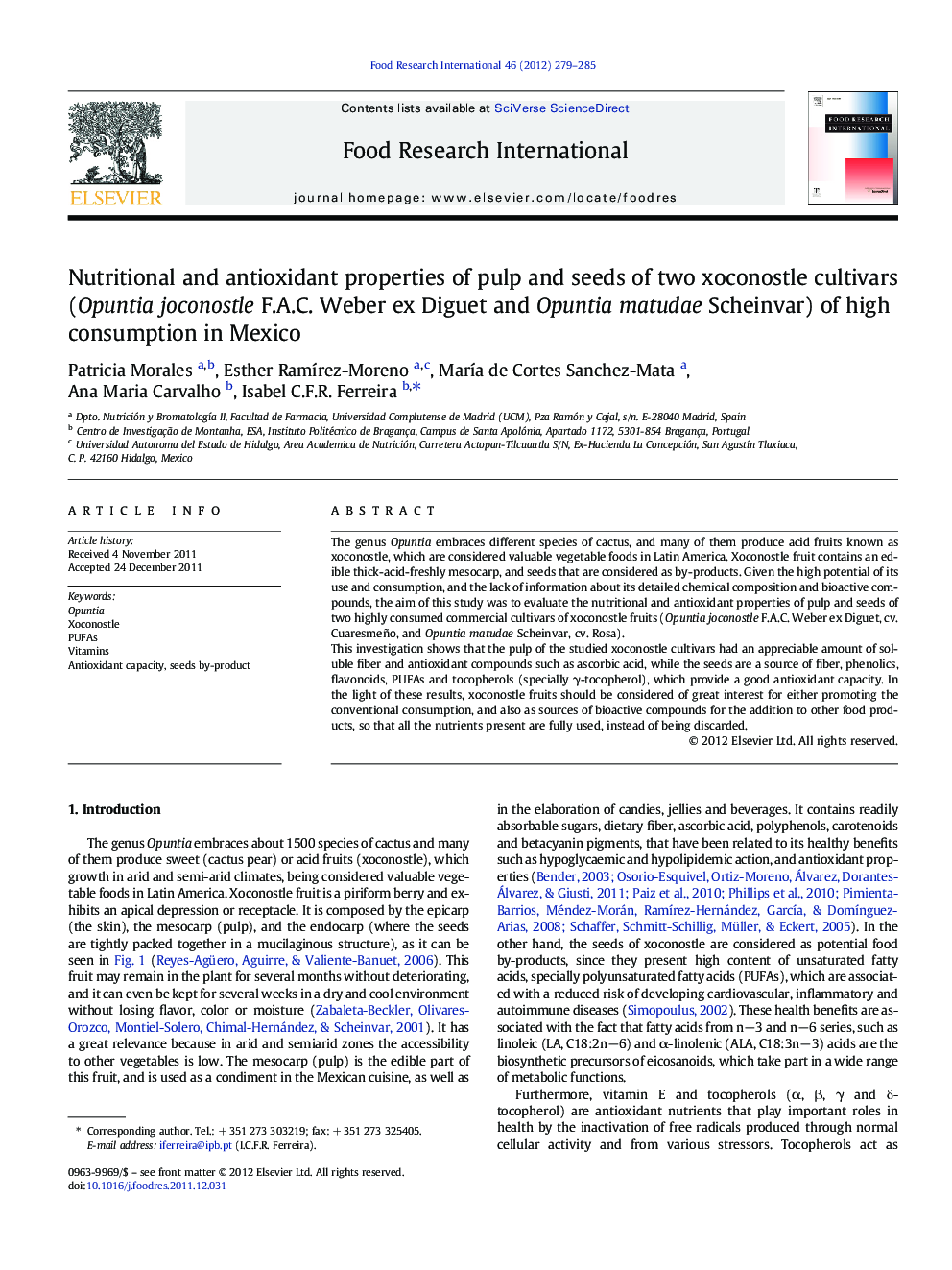| کد مقاله | کد نشریه | سال انتشار | مقاله انگلیسی | نسخه تمام متن |
|---|---|---|---|---|
| 4561912 | 1330694 | 2012 | 7 صفحه PDF | دانلود رایگان |

The genus Opuntia embraces different species of cactus, and many of them produce acid fruits known as xoconostle, which are considered valuable vegetable foods in Latin America. Xoconostle fruit contains an edible thick-acid-freshly mesocarp, and seeds that are considered as by-products. Given the high potential of its use and consumption, and the lack of information about its detailed chemical composition and bioactive compounds, the aim of this study was to evaluate the nutritional and antioxidant properties of pulp and seeds of two highly consumed commercial cultivars of xoconostle fruits (Opuntia joconostle F.A.C. Weber ex Diguet, cv. Cuaresmeño, and Opuntia matudae Scheinvar, cv. Rosa).This investigation shows that the pulp of the studied xoconostle cultivars had an appreciable amount of soluble fiber and antioxidant compounds such as ascorbic acid, while the seeds are a source of fiber, phenolics, flavonoids, PUFAs and tocopherols (specially γ-tocopherol), which provide a good antioxidant capacity. In the light of these results, xoconostle fruits should be considered of great interest for either promoting the conventional consumption, and also as sources of bioactive compounds for the addition to other food products, so that all the nutrients present are fully used, instead of being discarded.
► Mexican xoconostle cultivars were nutritionally characterized.
► The pulp had an appreciable amount of soluble fiber and ascorbic acid.
► The seeds are a source of fiber, phenolics, flavonoids, PUFAs and tocopherols.
► The fruits provide good antioxidant capacity and are sources of bioactive compounds.
Journal: Food Research International - Volume 46, Issue 1, April 2012, Pages 279–285